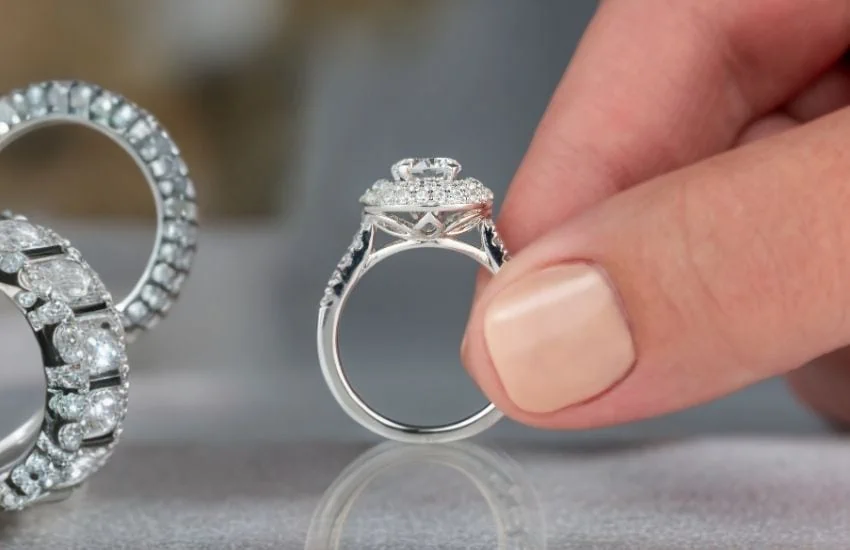
Table of Contents
For most of us, the word ‘ring’ covers everything we need to know about the topic. But when we dig a little deeper, it’s clear that there’s a lot of lingo around these seemingly simple jewelry items. While you don’t need to know all the parts of a ring, having an idea of these different elements can help you know what to look for. It’ll also help you communicate what you want clearly to your jeweler and show them that you know your stuff!
Let’s take a look at 12 different parts of a ring, and their function. Note that there are more terms out there, but we focused on the ones that we find are the most useful.
Parts of a Ring
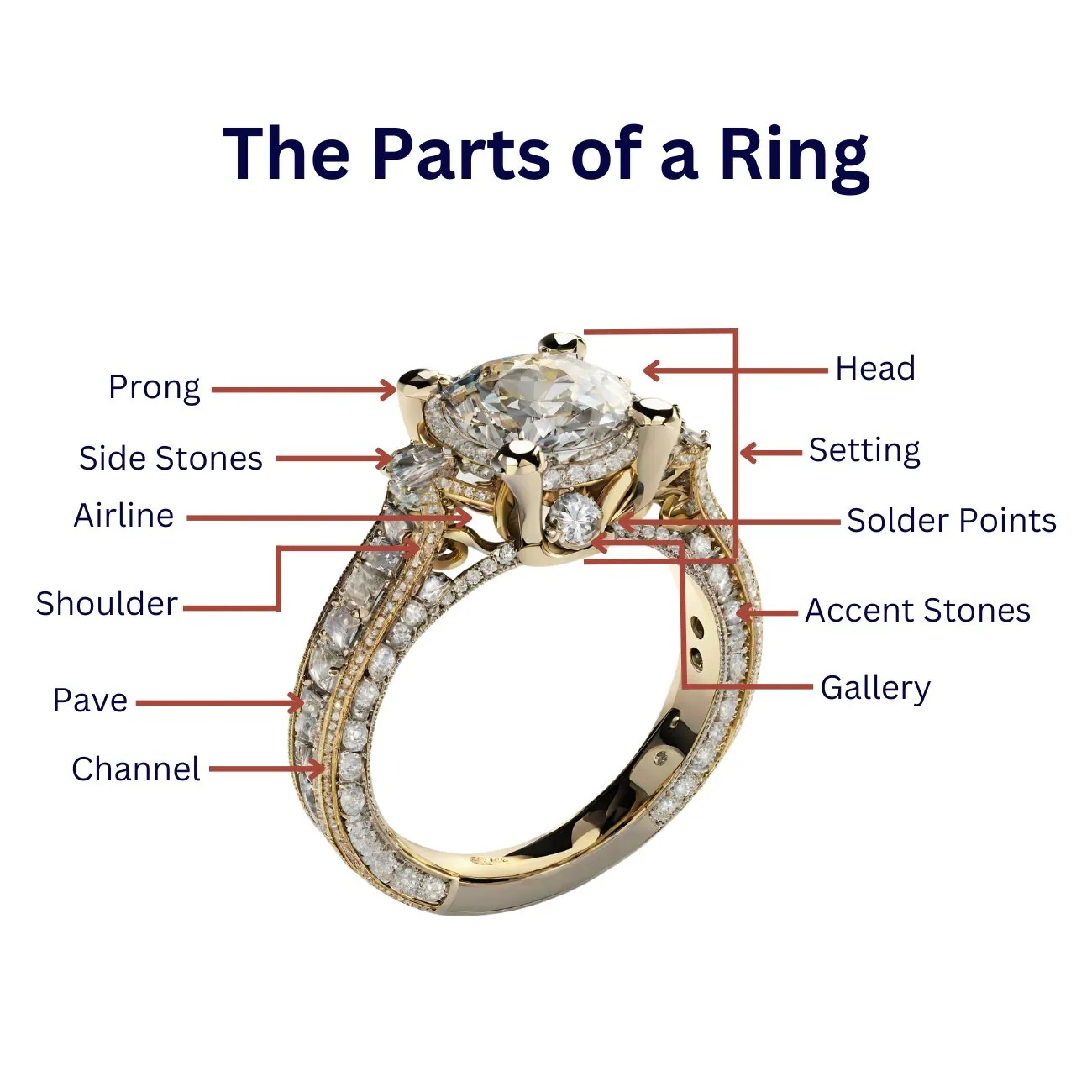
There are many important parts that make up a ring’s anatomy, all the way from the shank to the head. Knowing these different parts can help you make informed decisions when purchasing as well as enhance your understanding and appreciation of ring designs.
1. Shank
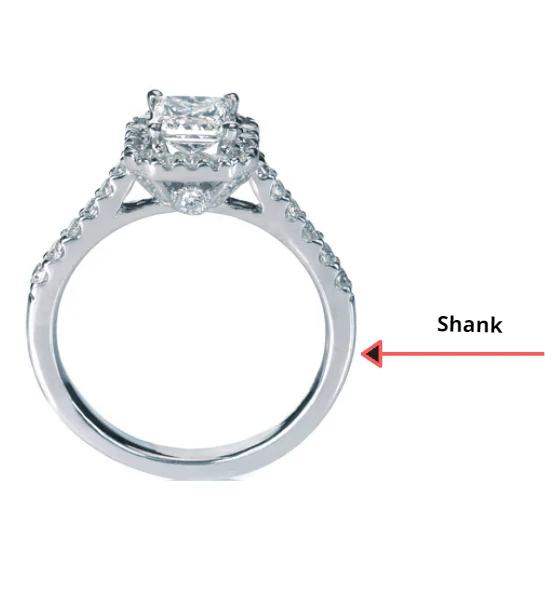
This is the band or the hoop of the ring. There are many types of ring shanks, from plain simple metal bands to elaborate, extravagant styles. While round shanks are the most common, you will also find flat bottomed shanks, called Euro shanks. These tend to keep the ring from spinning and are more suited for rings with large center stones.
2. Head
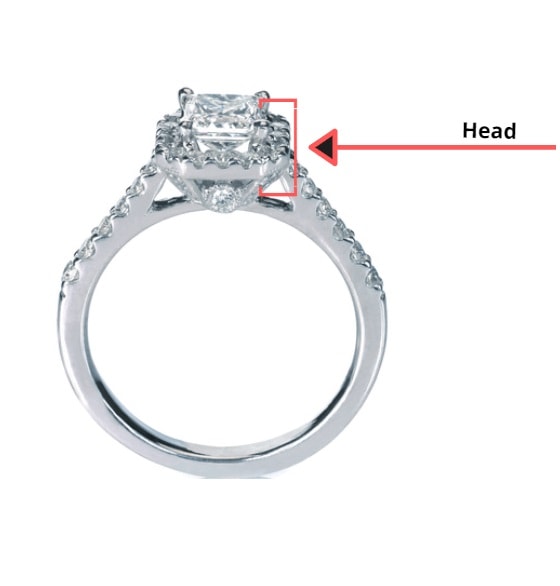
The head of a ring is a specific component that holds the main gemstone or the center stone. It’s essentially the part that “hosts” the gemstone. In some rings, especially those with a prominent center stone, the head is quite easy to see and can be recognized as the raised part of the ring holding the gemstone. A ring’s head can have different types of settings that keep the gemstone in place.
3. Gallery
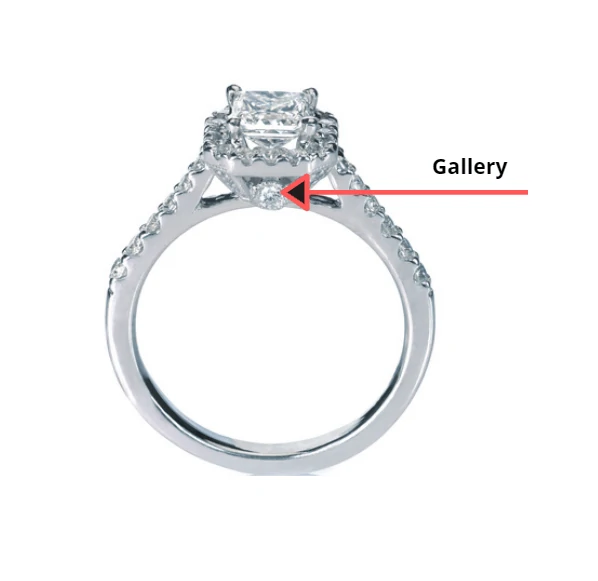
The gallery refers to the section that you can see from the side of the ring, under the center stone. It’s a part of the head (setting) of the ring and adds to the profile beauty of the ring. Some galleries are highly elaborate while others are highly minimalistic.
4. Shoulders
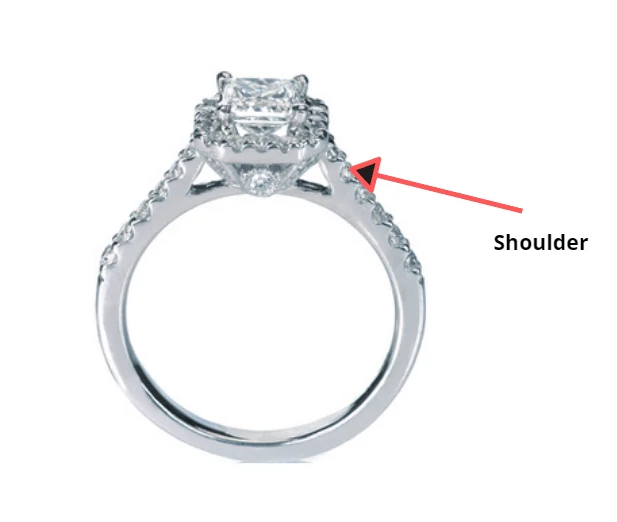
The shoulders of a ring are the sloping sides that lead up to the center of the design. The shoulders are what holds the head of the ring. These are often studded with accent stones to enhance the beauty of the design.
5. Solder Points
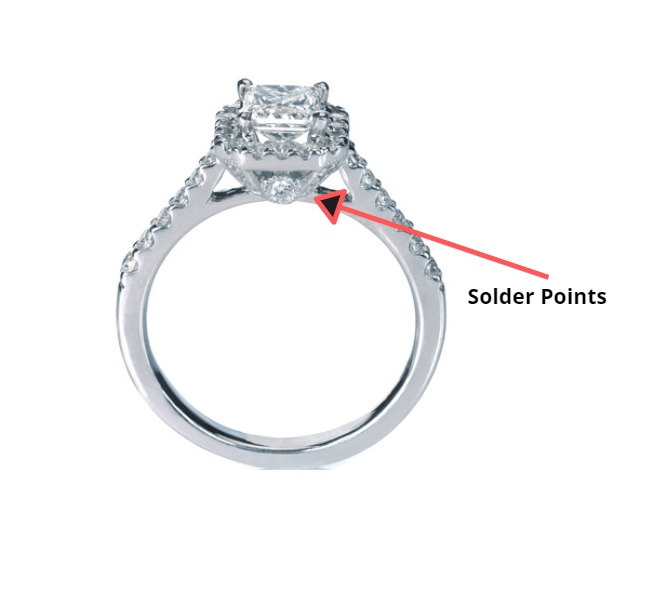
Most rings, especially those with complex designs, are made in separate pieces and then soldered together. Typically, the head and the shank are made separately and joined. The positions at which the metal joins metal is called a solder point.
6. Airline
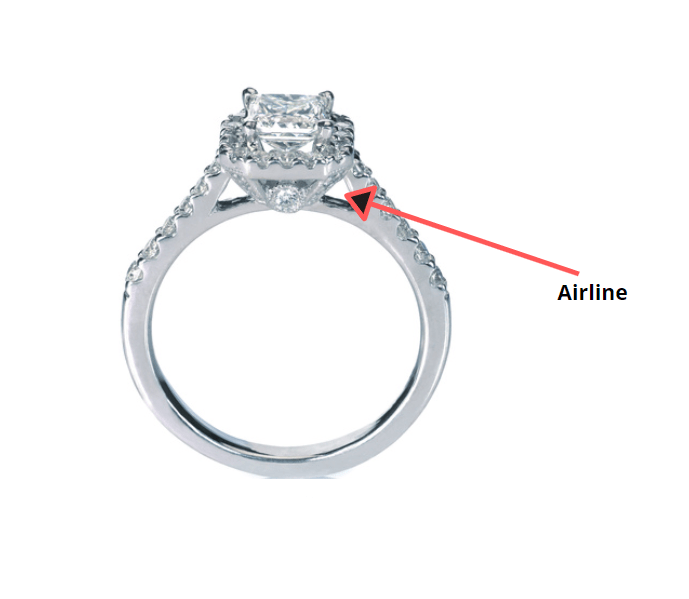
The airline is the open section typically found in settings where the head of the ring is held up high, like solitaire or cathedral settings. They’re not found on low settings where the head is set closer to the shank. The airline might appear an unnecessary feature, but it adds to the overall beauty of the ring design.
7. Prong
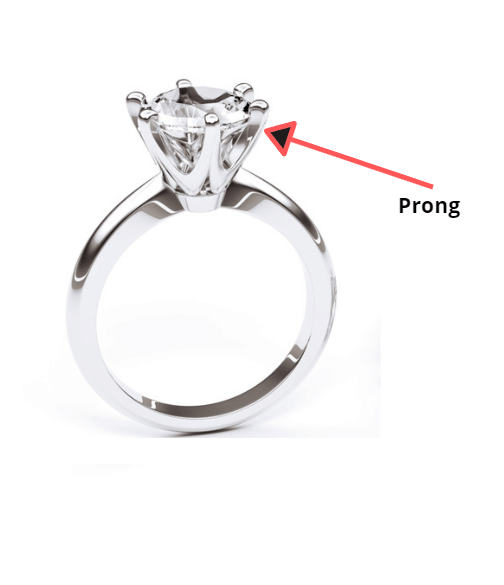
A prong is a little metal tip or bead that holds the gemstone or diamond in place. Prong settings, like the Tiffany setting, typically consist of 4 to 6 prongs on the head of the ring, carefully holding the center stone. Prong settings allow light to interact with the stone and make it appear large and brilliant.
8. Accent Stones
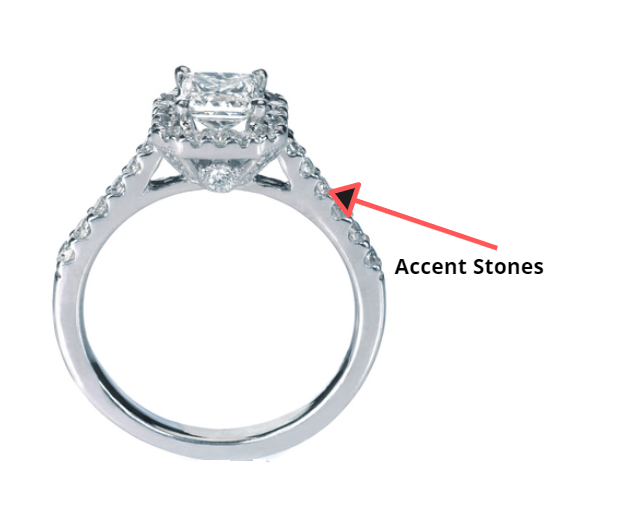
These are small, simply cut stones (typically called melee diamonds) used as to embellish the shank and the head of the ring. They add sparkle and beauty and can make a simple design look extravagant.
9. Side Stones
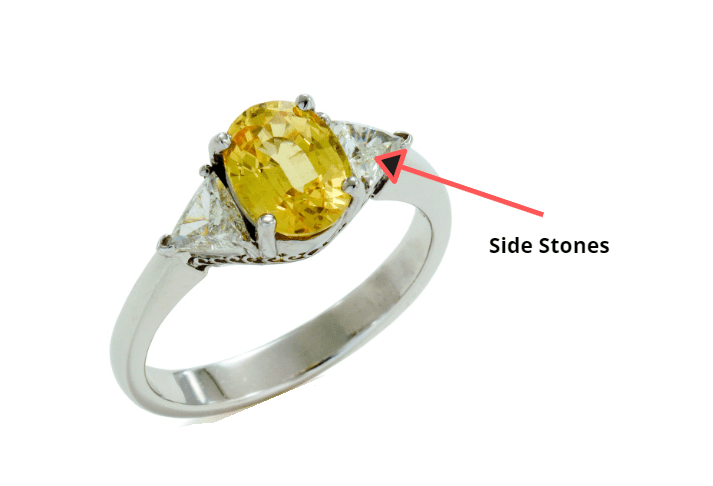
These are typically seen on ring designs like the three stone ring or five stone ring designs and refer to smaller diamonds or gemstones set on either side of the center stone. They’re similar to accent stones, but are located on the sides.
10. Channel
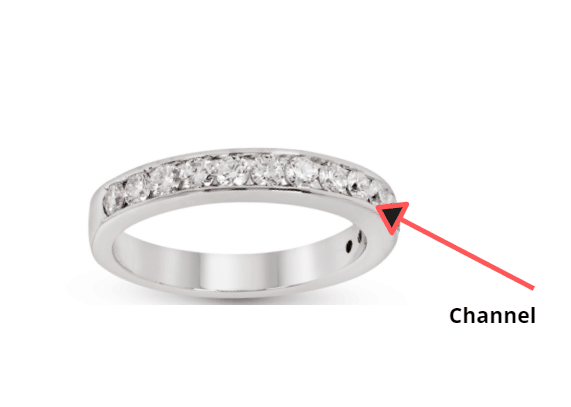
This refers to a groove or channel cut into the ring design, into which diamonds or gemstones are set. Rather than prongs, the channel is what holds the stones in place, making for a secure option. Channel settings are not as brilliant as prong settings, but have an intriguing, stylish look. They’re especially popular as eternity bands for wedding rings.
11. Pave
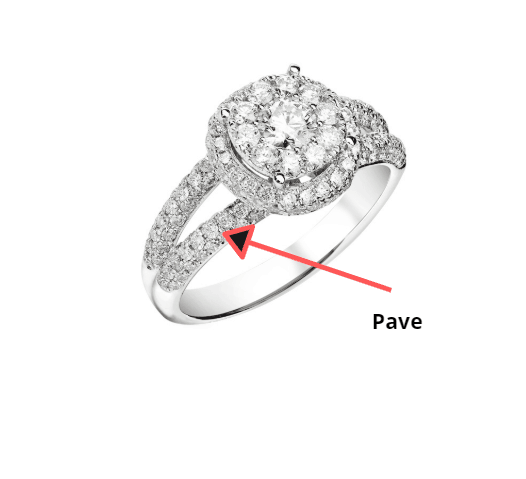
Pave setting is when the setting of the ring is ‘paved’ with numerous tiny diamonds or gemstones held in place with tiny bead-like prongs. The result is a shank that appears sparkly and extravagant. Micro-pave is a variation of pave settings, with even smaller diamonds used for an even more brilliant and glittery effect.
12. Setting
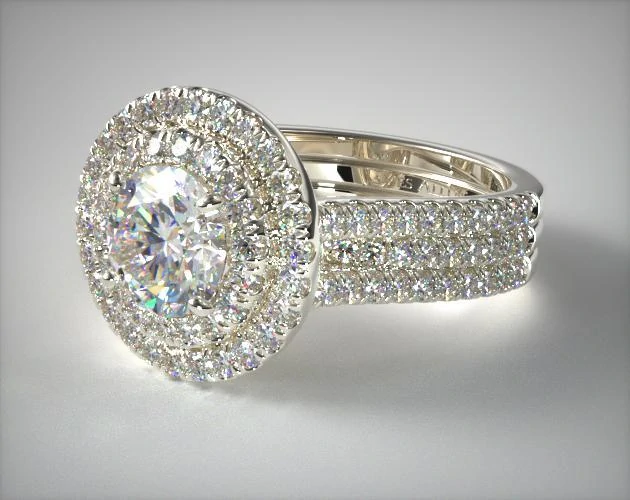
The setting of a ring refers to the method or structure in which a gemstone is held in place on the ring. It’s a broad term that covers various techniques and designs used to secure the gemstone.
- The solitaire setting is one of the most popular for engagement rings, featuring a single gemstone at the center of the ring. It’s typically held in place by prongs.
- The bezel setting refers to a metal frame that either completely or partially surrounds the center stone. Unlike the prong, the bezel provides more security for the stone and keeps it from unnecessary exposure.
- A halo setting refers to a circle of small diamonds or gemstones surrounding the center stone. It add brilliance to the design and can make a small center stone appear much larger than it is.
- Double or triple halo settings consist of two to three rows of diamonds or gemstones surrounding the center stone. It serves to make the center stone appear larger and more brilliant.
- Three stone settings feature three stones of various sizes and types, typically placed in a row. It’s a symbolic design, representing a couple’s past, present, and future.
Why Learn the Anatomy of a Ring?
The above list gives you an overview of the various sections of a ring. But why learn these terms? Isn’t it enough to simply tell your jeweler that you want a ring? We’ve already covered some of this above, but let’s break it down further.
- Make Informed Purchasing Decisions: Understanding the components of a ring helps you make informed choices. For example, knowing the difference between a channel or a pave can help you pick the right element for your lifestyle and budget.
- Effective Communication with Jewelers: If you’re customizing a piece or requesting repairs, knowing the terms ensures clear communication with your jeweler, leading to better outcomes and avoiding potential misunderstandings.
- Foster Appreciation of Craftsmanship: Recognizing the parts of a ring and the skill required to create them fosters a deeper appreciation for the craftsmanship and artistry behind each piece. You might even value your piece more!
- Enhanced Care and Maintenance: Being familiar with ring anatomy can guide proper care. For example, knowing the vulnerabilities of certain settings can influence how you wear, store, or clean the ring.
Wrapping Up
For the perfect ring design, all these elements have to work together to create a cohesive overall look. By knowing these terms, you’ll be able to pick apart the anatomy of a ring and to analyze a ring design, which in turn, will assist you in finding exactly what you want.
Feeling confident? Test your knowledge by identifying these parts in your favorite ring designs. And remember, whether you’re picking out a ring or designing one, this guide ensures you’re no longer lost in jargon!









